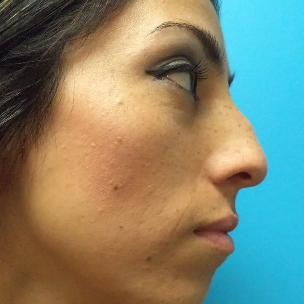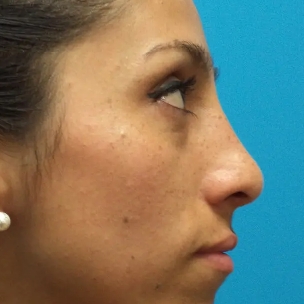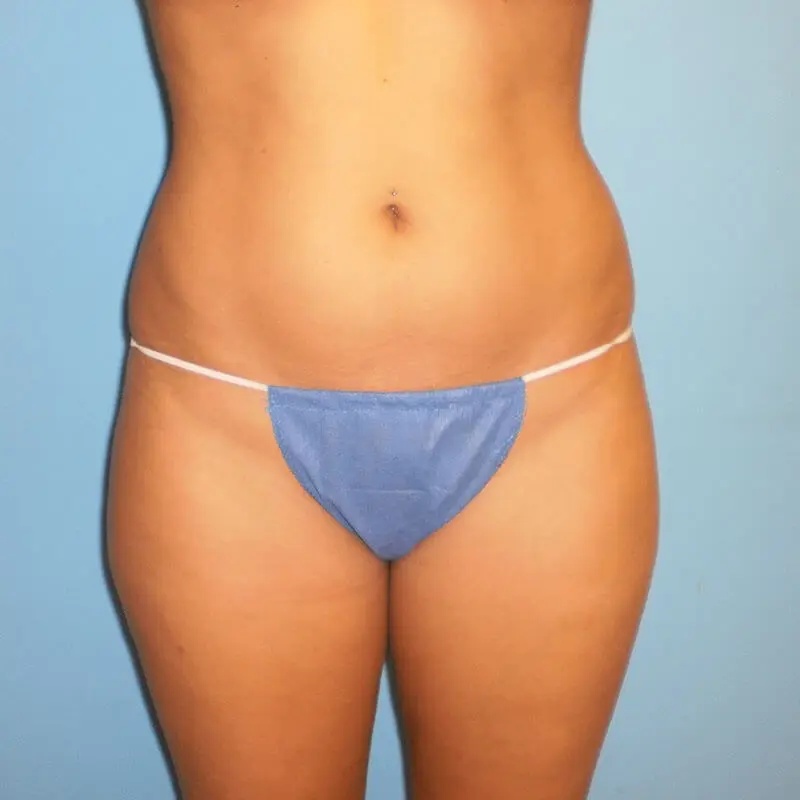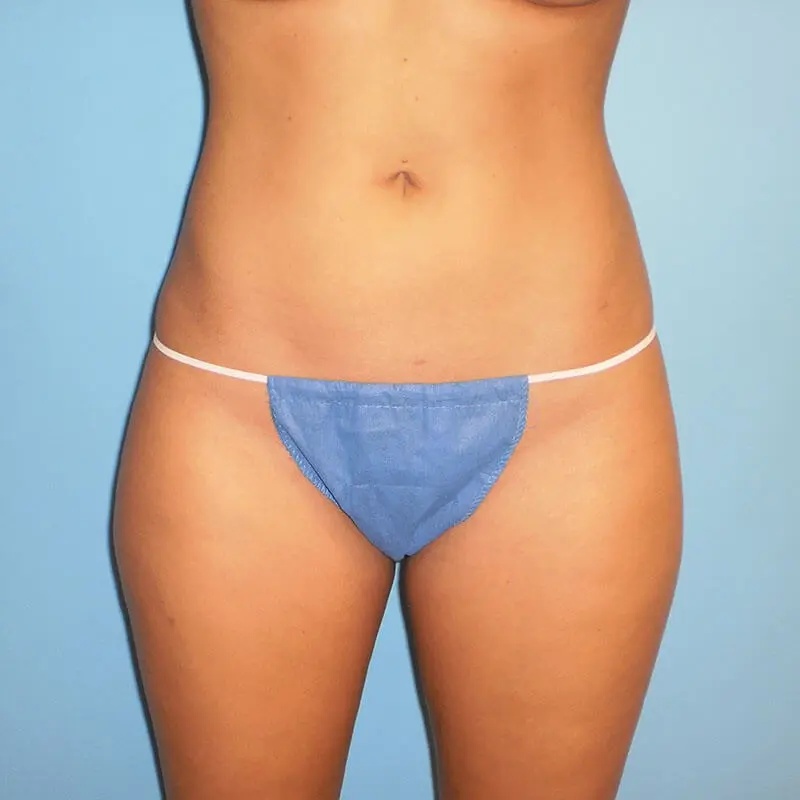Facelift
Conveniently located to serve the areas of Tampa, FL

A facelift, or rhytidectomy, is a skin-tightening procedure that removes excess skin for a smoother, more youthful-looking appearance. Tightening the skin with a facelift diminishes wrinkles, fine lines, and sagging skin with hidden incisions that provide natural-looking results. With this procedure, you can enjoy smoother skin, improved jawline definition, and a more youthful-looking appearance. Specialists performed the popular procedure more than 78,400 times in 2023 to help patients lift and tighten their skin. (1)
PREMIERE Center for Cosmetic Surgery is overseen by Dr. Samuel Sohn, a board-certified plastic surgeon who is renowned for his innovative procedures that produce stunning, age-defying results. Our team has helped many patients reduce signs of aging and restore their self-confidence with procedures designed to enhance their natural beauty.
Contact our office online or call (813) 400-1465 to learn more about how a facelift can transform your appearance!
Contents
Before and After Photos
About Facelifts
A facelift can improve the appearance of sagging skin, droopy jowls, fine lines, and wrinkles for a smoother, more youthful-looking appearance. We can tighten the skin in the lower and midface to address deep wrinkles, lines, and nasolabial folds for a natural look. We will evaluate your skin during your consultation to determine the most effective procedure for your goals:
- Traditional Facelift: We can address significantly droopy skin around the mouth, cheeks, jawline, and/or neck. This is the most comprehensive option, and it addresses aesthetic concerns from the cheeks to the neck.
- Limited (Mini) Facelift: We can make minor adjustments to the lower face to improve the appearance of the skin along the jawline and neck.
Male vs. Female Facelift
Men who wish to maintain their strong features and jawline definition can also benefit from a facelift. A facelift can help male patients sharpen their features by removing excess skin. We can also combine several cosmetic procedures, such as a neck lift or fillers, with a facelift to help men address multiple cosmetic goals during a single appointment.
Facelift vs. Dermal Fillers

Although a facelift can address mild laxity and wrinkles, it cannot restore volume to your skin. We can include dermal fillers as part of your treatment plan for a plumper, more youthful-looking appearance. Aging can result in hollow cheeks, under-eye bags, and thin lips. We offer several different formulas to address deep and delicate tissue for natural-looking results. We can also reduce the appearance of wrinkles, fine lines, and nasolabial folds with fillers by restoring volume to your skin.
Neck Lift
We can combine a traditional facelift with a neck lift to remove droopy skin from the neck, colloquially known as a “turkey neck.” We can also perform a neck lift separately to address signs of aging and contour the jawline. A neck lift tightens the underlying muscles, which often thicken and begin to droop with age. A neck lift can also reduce the appearance of a double chin, and we can combine the treatment with liposuction to remove pockets of excess fat for a smoother appearance.
Nonsurgical Facelift Options
Although facelift surgery is the longest-lasting option for improving your appearance, non-surgical procedures can address mild to moderate signs of aging with less downtime. The platelet-rich plasma (PRP) facial is a minimally invasive injection-based treatment that can significantly improve the appearance of fine lines, wrinkles, and sagging skin. We also offer several injectable treatments for facial rejuvenation.
Benefits
There are several benefits to a facelift, including:
- Customizable treatment for your specific anatomy and goals
- Balanced facial features
- Lifted, smoother complexion
- Natural-looking results
- Improved jawline definition
- Reduced fine lines and wrinkles
- Improved self-esteem
Candidates
Ideal candidates for facelift surgery would typically like to address sagging skin, jowls, and deep wrinkles. If you would like to receive a facelift, you must have realistic expectations about what you can achieve with the procedure. You should be in overall good health. You must avoid drinking alcohol for 24-48 hours before and after the procedure. You will also need to refrain from smoking for at least two weeks before the procedure. Although there isn’t an age requirement for a facelift, patients in their 30s can receive a mini facelift to address minor signs of aging that nonsurgical treatments cannot address.
Personal Consultation
During your consultation, you can discuss your aesthetic concerns with us, and we will evaluate your skin to determine the most effective treatment plan based on your underlying anatomy. (2) You should also come prepared to discuss your medical history. We will need to know about your cosmetic goals, current medications, and any cosmetic procedures you have had in the past. Additionally, you will have the chance to review before and after photos of previous patients to see what results you can expect with your procedure, and you can ask any questions you have.
Since a facelift surgery only addresses the lower two-thirds of the face, women and men looking to enhance the entire face usually combine their facelifts with other procedures. For example, eyelid surgery (blepharoplasty) can improve the appearance of the upper and lower eyelids for a rejuvenated and alert look. Chin implant surgery can further balance the facial features with a more defined chin. A brow lift (forehead lift) can address aging in the forehead and brows.
Procedure
During your procedure, we will cleanse your skin. Your anesthesiologist will administer general anesthesia or intravenous sedation.
We will mark your skin and carefully make incisions to tighten the skin for a smoother look. We will hide the incisions along the hairline to minimize scarring. The type of incisions you receive will depend on your treatment plan:
- Traditional Facelift: During a traditional facelift, we will make an incision near each temple where the hairline begins. This incision extends behind the ears and ends in the lower scalp. With this incision technique, your surgeon can easily sculpt or redistribute tissue and muscle to lift and tighten your facial appearance.
- Mini Facelift: Because a mini facelift is a less invasive procedure, the incisions will be shorter than with a traditional facelift. These incisions run behind the ear and extend in front of it slightly.
After we reposition and tighten the excess tissue, we will reposition the skin along the natural contours of your face and close the incisions with sutures. We will also place bandages with small tubes that drain excess fluid, depending on the type of facelift you have. Our team will monitor you in our recovery room, and you can return home after your monitoring period.
Recovery
Your surgeon will provide specific recovery instructions based on your procedure. Full recovery from a facelift generally takes six to eight weeks, at which point you can see your final results. After surgery, you may experience swelling, bruising, and/or mild discomfort for several weeks. You can alleviate discomfort with medication for a more comfortable recovery.
You must have someone you trust to drive you home after your procedure. You should also ensure someone can help you during the first 24 hours or longer. You must sleep with your head elevated and refrain from strenuous activities until your surgeon clears you to do otherwise. Most patients can return to work after one week. Ensuring that your incisions heal completely before undergoing any strenuous activity can help minimize scarring. We will let you know when you can return to exercise.
Results
After you recover, you can enjoy a rejuvenated facial appearance. You will no longer need to worry about loose and sagging skin on your lower face or wrinkles. Instead, you can smile at your more contoured and youthful appearance in the mirror.
Healthy habits such as eating a nutritious diet, exercising consistently, and refraining from excessive alcohol and tobacco use can significantly slow aging and prolong your facelift results. Our philosophy is to create the most natural results and never do more than is necessary. We recommend avoiding excessive sun exposure since UV light can contribute to up to 80% of facial aging. (3)
The Cost of a Facelift in Florida
The cost of a facelift will vary based on your individual needs and the techniques used for your procedure. We can provide an all-inclusive quote during your consultation. We offer several different financing options and are committed to helping our patients find the best payment method for their needs.
Contact our office online or call (813) 400-1465 to schedule a consultation and learn more about how customizable facelifts have helped thousands of patients restore their self-confidence!
FAQ
Is there an age requirement for facelifts?
No, there isn’t an age requirement for facelifts. Most patients are 40 or older. Some patients in their 30s also receive facelifts to address mild signs of aging.
How do I know if a facelift is right for me?
If you have moderate to severe wrinkles and/or sagging skin, we can help you achieve a more youthful-looking appearance with a facelift.
Are there nonsurgical alternatives to a facelift?
If you have mild signs of aging, we can discuss alternative treatments during your consultation.
Will I have scarring after a facelift?
We make careful incisions near the hairline along the natural creases of your skin for a natural-looking appearance.
References
- American Society of Plastic Surgeons ® Endorsed Partner. https://www.plasticsurgery.org/documents/news/statistics/2023/plastic-surgery-statistics-report-2023.pdf
- Rohrich RJ, Sinno S, Vaca EE. Getting Better Results in Facelifting. Plastic and Reconstructive Surgery – Global Open. 2019;7(6):e2270. doi:https://doi.org/10.1097/gox.0000000000002270
- Amaro-Ortiz A, Yan B, D’Orazio J. Ultraviolet Radiation, Aging, and the Skin: Prevention of Damage by Topical cAMP Manipulation. Molecules. 2014;19(5):6202-6219. doi:https://doi.org/10.3390/molecules19056202










